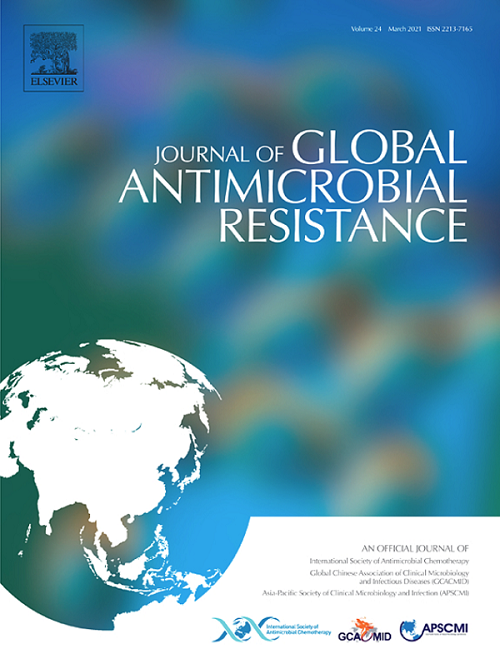结核病和耐药形式的全球流行:1990年至2019年的30年分析
IF 3.2
3区 医学
Q2 INFECTIOUS DISEASES
引用次数: 0
摘要
结核病(TB)仍然是一个主要的全球健康威胁。耐多药结核病(MDRTB)和广泛耐药结核病(XDRTB)面临越来越大的挑战。方法:本研究利用全球疾病负担数据分析年龄标准化患病率(ASPR),评估1990 - 2019年全球和国家结核病及其亚型的流行趋势。结果:全球结核病患病率呈下降趋势,但耐多药结核病和广泛耐药结核病的患病率呈急剧上升趋势。2019年,结核病ASPR为每10万人中有23,085人,自1990年以来每年下降1.044%。2019年,潜伏性结核病感染率每年下降1.044%,至每10万人22906人。2019年,药敏结核病每年下降1.692%,至每10万人169人。耐多药结核病每年增长6.008%,2019年达到每10万人8.6人。XDRTB每年增加71.746%,达到每10万人0.4人。各国之间的比率差别很大。ASPR在男性和贫困地区往往更高。变化的速度因性别、社会经济和地理而异。结论:全球结核病患病率和趋势存在很大差异,反映了不平等。研究结果提供了全面的长期结核病评估,多药耐药性的上升威胁着进展和消除结核病的目标。需要针对高风险群体、监测、资源、承诺和政治意愿,特别是弱势群体,制定紧急的目标战略。本文章由计算机程序翻译,如有差异,请以英文原文为准。
Global prevalence of tuberculosis and drug-resistant forms: A 30-year analysis from 1990 to 2019
Objectives
Tuberculosis (TB) remains a major global health threat. Multidrug-resistant (MDRTB) and extensively drug-resistant TB (XDRTB) present growing challenges. This study aims to analyze the global and national prevalence trends of TB and its subtypes from 1990 to 2019.
Methods
This study utilised Global Burden of Disease data to analyse age-standardised prevalence rates (ASPR) and evaluate the global and national prevalence trends of TB and its subtypes from 1990 to 2019.
Results
Global TB prevalence is declining but MDRTB and XDRTB are rising sharply. In 2019, TB ASPR was 23 085 per 100 000, falling 1.044% annually since 1990. Latent TB infection decreased 1.044% yearly to 22 906 per 100 000 in 2019. Drug-susceptible TB fell 1.692% annually to 169 per 100 000 in 2019. MDRTB rose 6.008% yearly, reaching 8.6 per 100 000 in 2019. XDRTB increased 71.746% yearly to 0.4 per 100 000. Rates varied widely between countries. ASPR tended to be higher in males and poorer regions. Pace of change differed by sex, socioeconomics and geography.
Conclusions
Substantial variations exist in TB prevalence and trends globally, reflecting inequities. Findings provide comprehensive long-term TB assessments, with rising multidrug resistance threatening progress and elimination goals. Urgent targeted strategies are needed for high-risk groups, surveillance, resources, commitment and political will, especially in disadvantaged populations.
求助全文
通过发布文献求助,成功后即可免费获取论文全文。
去求助
来源期刊

Journal of global antimicrobial resistance
INFECTIOUS DISEASES-PHARMACOLOGY & PHARMACY
CiteScore
8.70
自引率
2.20%
发文量
285
审稿时长
34 weeks
期刊介绍:
The Journal of Global Antimicrobial Resistance (JGAR) is a quarterly online journal run by an international Editorial Board that focuses on the global spread of antibiotic-resistant microbes.
JGAR is a dedicated journal for all professionals working in research, health care, the environment and animal infection control, aiming to track the resistance threat worldwide and provides a single voice devoted to antimicrobial resistance (AMR).
Featuring peer-reviewed and up to date research articles, reviews, short notes and hot topics JGAR covers the key topics related to antibacterial, antiviral, antifungal and antiparasitic resistance.
 求助内容:
求助内容: 应助结果提醒方式:
应助结果提醒方式:


